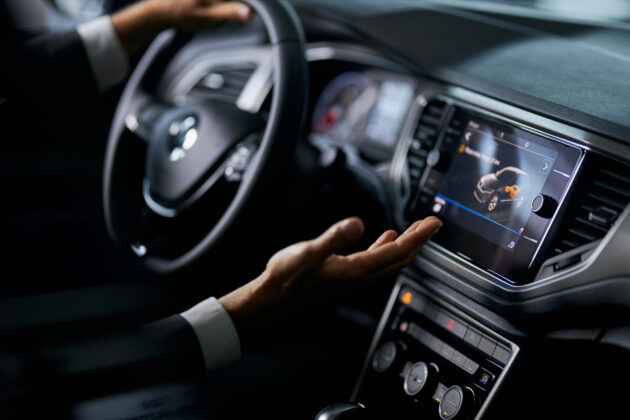
Ever feel like your car is smarter than you sometimes? In the past decade, cars have evolved from simple machines that get us from point A to point B to high-tech marvels anticipating our every move.
Thanks to driver-assist technologies, today’s vehicles are equipped with an array of tools designed to make driving safer and more efficient. But how do these futuristic features work?
Table of Contents
What Exactly Are Driver-Assist Technologies?
In simple terms, driver-assist technologies are a group of systems designed to help drivers with tasks like staying in their lane, maintaining speed, and avoiding accidents. These systems use sensors, cameras, and software to monitor your surroundings and help you make safer driving decisions.
From adaptive cruise control to blind-spot monitoring, the goal is to reduce the risk of accidents and make your journey more convenient. From being stuck in traffic to cruising down the highway, these technologies aim to make every drive easier and safer. They’re like the ultimate “backup” that steps in when things get tricky.
The Tech Behind the Magic: Sensors, Cameras, and Software
A big part of the magic behind driver-assist systems comes from the combination of sensors, cameras, and clever software. Sensors like radar, lidar, and ultrasonic devices constantly scan the road for obstacles, vehicles, and pedestrians. Cameras positioned around the car also constantly analyze road markings, traffic signs, and the movement of other vehicles.
The software then takes all this information and makes real-time decisions about how to help the driver. It can steer, adjust speed, or even apply the brakes if necessary. In a way, these systems constantly learn and update, so the more you drive, the more they refine their responses.
Popular Driver-Assist Features and How They Work
Adaptive cruise control takes traditional cruise control up a notch by adjusting your speed based on traffic flow. If the car in front slows down, your vehicle will automatically reduce speed to maintain a safe distance. Once the road clears, it accelerates back to your preset speed.
Lane-keeping assist subtly steers the car back into its lane without signaling if it detects unintentional drifting. It’s not a replacement for staying focused, but it’s a helpful reminder on long drives or during moments of distraction.
Automatic emergency braking can be a lifesaver in urgent situations. If your car senses an imminent collision, it will automatically apply the brakes to reduce or prevent impact—ideal for those moments when you might not have time to react.
Lastly, blind-spot monitoring uses sensors to watch your vehicle’s blind spots, alerting you with a visual or audible signal if another car is in the area. This feature makes lane changes safer by informing you of vehicles you can’t see directly.
These technologies make your car a safety machine that reacts faster than you can. In vehicles like the 2024 Toyota Sienna, these systems work seamlessly to create a smoother, more intuitive driving experience.
The Pros and Cons of Driver-Assist Technologies
Like any technology, driver-assist systems have benefits and drawbacks. First and foremost, these systems reduce driver fatigue and help in situations where human reaction times may fall short, like when a car suddenly cuts into your lane or you don’t notice an obstacle in time.
Driver-assist technologies also make driving more accessible for certain groups, such as seniors or those with disabilities. By assisting with tasks like steering and braking, these features can give people the confidence to drive independently, even if their physical abilities aren’t what they once were.
Of course, there are some potential downsides to consider. Over-reliance on these systems could make drivers less engaged and attentive.
The systems aren’t foolproof either — no tech is. So, while they can help prevent accidents, they’re not guaranteed to avoid every situation, especially in challenging driving conditions like heavy rain or snow.
The Future of Driving: Where Do We Go From Here?
As car manufacturers refine these systems, you can expect even more intuitive features that make driving safer and less stressful. One major development area is integrating artificial intelligence (AI) and machine learning. These technologies will allow cars to learn from past experiences, improving their real-time decision-making and adapting to unique driving situations.
Another promising advancement is vehicle-to-everything (V2X) communication, where cars can interact with other vehicles and even traffic signals. This could make traffic flow smoother and prevent accidents by allowing vehicles to “talk” to each other, sharing information like speed, direction, and road conditions.
A Smarter, Safer Drive
Driver-assist technologies are revolutionizing how people drive, offering convenience, safety, and futuristic innovation. While imperfect and shouldn’t replace driver attention, they’re a valuable tool that can reduce stress, enhance safety, and help prevent accidents.
As these technologies continue to evolve, the future of driving looks brighter than ever. Next time you’re behind the wheel, take a moment to appreciate the tech helping you stay safe, making your drive a little easier, and maybe even saving you from that one close call you didn’t see coming.
